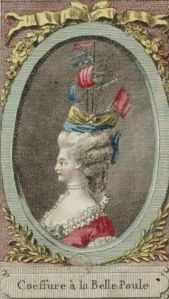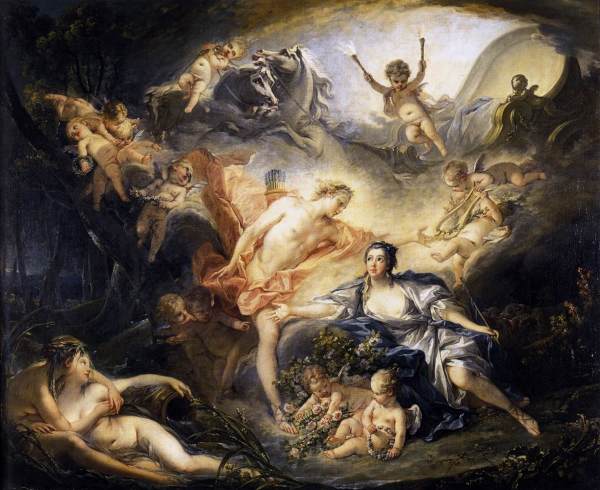or, The Power of Pink: She’s a Girl, get over it

Portrait of Marquise de Pompadour by Boucher, 1759. Oil on canvas © The Wallace Collection, London
So here, at last, it couldn’t be resisted, the most familiar and most delectable of all the images of Madame de Pompadour that enchanted my childhood is posted here for DvP, like everything else that matters in life.
It is not just the story of a dress, though what a dress, which can transform a woman into a rose, it is the story of the balance of feminine power between personal ambition and love for another person. She sacrificed peace of mind for ambition, and then fell in love, first with a king, then a man, then a country, and finally a civilization which she made universal.
Notorious as the quintessential courtesan, sneered at by the court for being bourgeois, called “putain” by the king’s sour doughball of a son, reviled by the public, viewed ambivalently today as a well-dressed figurehead of a rotting totalitarian system, there was nothing vulgar, tarty or heartless about her. The illegitimate daughter of a financier showed the world how a cultural leader and benevolent queen should behave.
She was not a parasite; she graced the ancien regime, she gave it lustre and refinement, and it is to Louis XV’s credit that he recognized her contribution to French culture, beyond her private services to him. She transcended the official position of royal mistress through her own accomplishments and charm, of which sex was the smallest part.
If you examine her portrait closely, with the same forensic intensity we study photo-shopped celebrities for flaws today, you might be thinking, by this time, 1758, she was in her late thirties, her looks deteriorated prematurely by anxiety, poor health and rich food, she wanted to hide her ageing neck and chin with that chic ruffle round her neck, then, yes, you are right, of course she did, and let her alone, for heavens’ sake; she lived to please; one person’s vanity is beauty’s gift of happiness to everyone with eyes to see, and shame to you who evil thinks.
She lived beautifully, and showed the rest of us how to do it, too. She united femininity with power, without concessions to coarseness or snobbery. She was a talented actress who knew how to put on a good show with complete sincerity. That is not a contradiction; good acting is about unpeeling layers to the truth underneath, however you are feeling. No-one has ever achieved and exercised power in quite the way she did, in such elegant style, on such a grand scale, and being nice to everyone along the way.
She is leaning on Pigalle’s statue of ‘L’Amour embrassant l’Amitié’, Love embracing Friendship, which she had commissioned in 1754 to aggrandize her new relationship with the king. They agreed they would not sleep with each other more, but that she would keep her job, because Versailles and French civilization were better with her, and he needed her, he couldn’t rule or live without her, and promiscuous lover though he was, he would be the most faithful of friends.
A lot of us can’t live without her, either. She’s one of the most enduring and likeable of icons, a woman for all seasons. We love her for the beautiful display, and the vulnerability.
“It is the time you have wasted for your rose that makes your rose so important.”
Antoine de Saint-Exupery, The Little Prince





